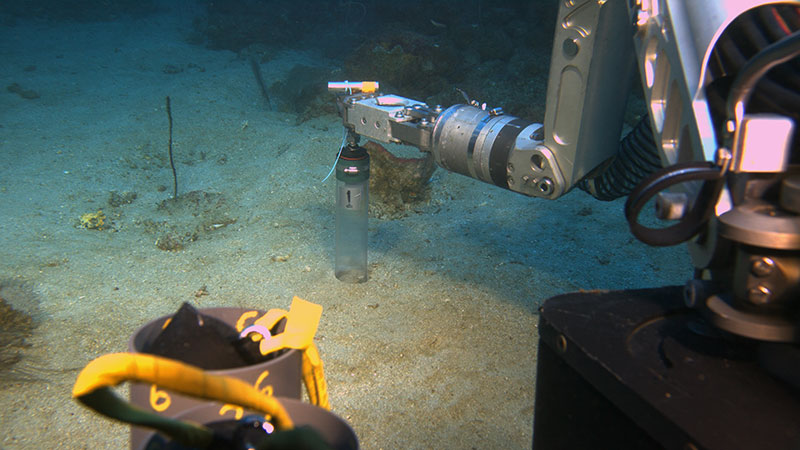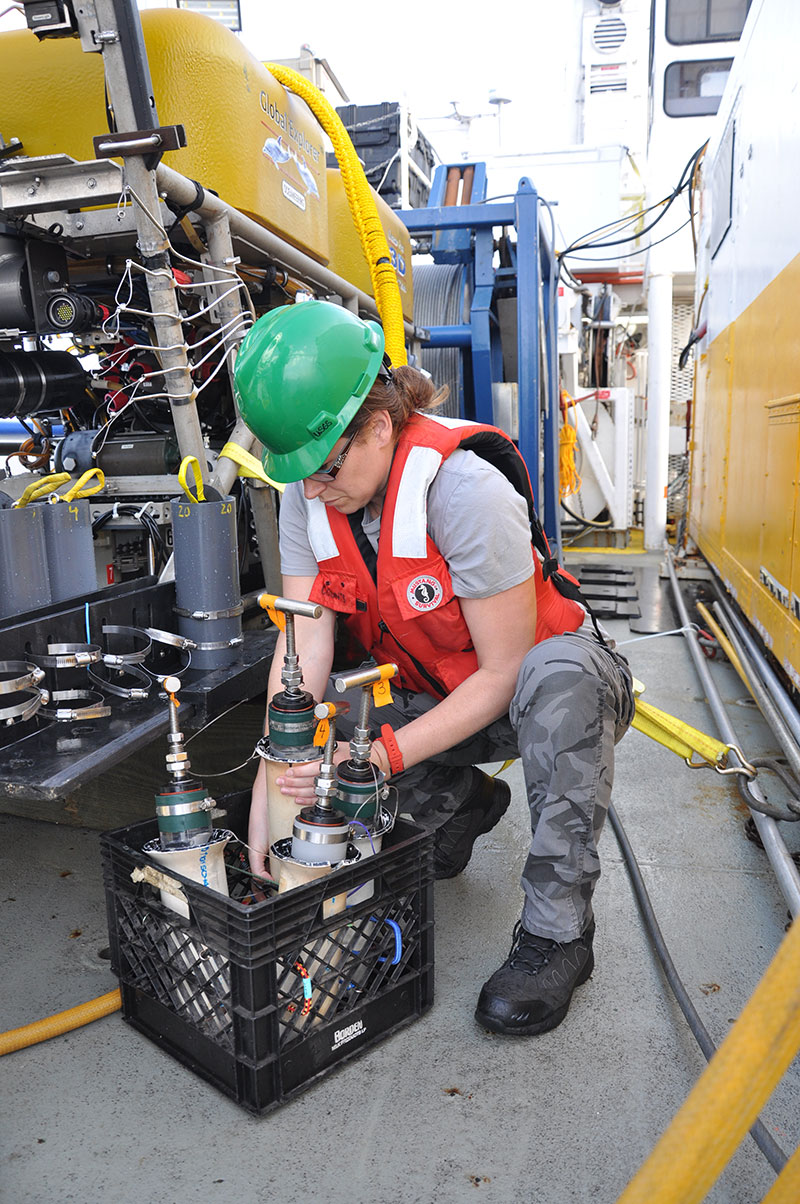
By Nancy Prouty
Amanda Demopoulos, Research Ecologist
U.S. Geological Survey
May 1, 2019

The Global Explorer remotely operated vehicle collecting sediment samples at Alderdice bank, 63 meters (207 feet) deep, using a push core. The collected samples will eventually undergo isotopic analyses in the lab. Image courtesy of Connectivity of Coral Ecosystems (CYCLE) in the Northwestern Gulf of Mexico 2019. Download larger version (jpg, 6.6 MB).
As the saying goes, “you are what you eat!” Luckily, this is also true for marine life in coral ecosystems. By tracking the diet of animals in and around the Flower Garden Banks National Marine Sanctuary, we can understand what the animals have eaten and where they have traveled to obtain their food. In turn, this information helps resource managers understand habitat use and food web connections between different marine animals.
The composition of an animal’s tissues and bones provides a record of its diet over time. To decipher the diet and feeding behavior, we will measure stable isotopes and other chemical elements in the animals’ tissues, bones, and surrounding environment. For example, if the animals feed exclusively in coral ecosystems with little movement among adjacent habitats, they should have stable isotope compositions similar to those of coral ecosystem “residents,” i.e., those animals that spend their adult life stages in coral environments and restrict their movement over small spatial scales. Alternatively, if they are consuming a mixture of coral residents and adjacent ecosystem residents, then we would expect that their isotope compositions to fall between these two habitats.

Jennie McClain offloading sediment cores from the remotely operated vehicle after a dive at Alderdice bank. Sediments are processes and preserved for isotope analyses back in the laboratory. Image courtesy of Jill McDermott. Download larger version (jpg, 6.9 MB).
We can also use stable isotope values of tissues with different turnover rates (muscle = fast, bone = slow). If the isotopic values are similar between the tissue types, then it is most likely that the animal has stayed close to its food source over time. But if the animal has migrated to different habitats over its lifetime, scientists can analyze the animal’s hard parts (e.g., otoliths or a fish’s ear bone) to track movement between habitats or water masses. In other words, animals record the chemistry of their environment in their hard parts so the chemical signature of fish otoliths provides information on habitat use with age. For example, this approach has been used to identifying nursery sources for Gulf of Mexico red snapper, Lutjanus campechanus, populations.
By combining different chemical techniques, stable isotopes and chemical elemental analysis, scientists can begin to answer questions about different life stages of the fish. For example, is the nursery habitat and adult habitat the same? Is there movement from shallow to deeper waters during the animal’s lifetime? Ultimately, answering these questions will help both scientists and resource managers understand habitat use and food web connections in coral ecosystems within the sanctuary and of the northwestern Gulf of Mexico.

Jennie McClain filtering water samples for particulate organic matter (POM) collected with niskin bottles mounted on the Global Explorer remotely operated vehicle. Image courtesy of Santiago Herrera. Download larger version (jpg, 5.6 MB).